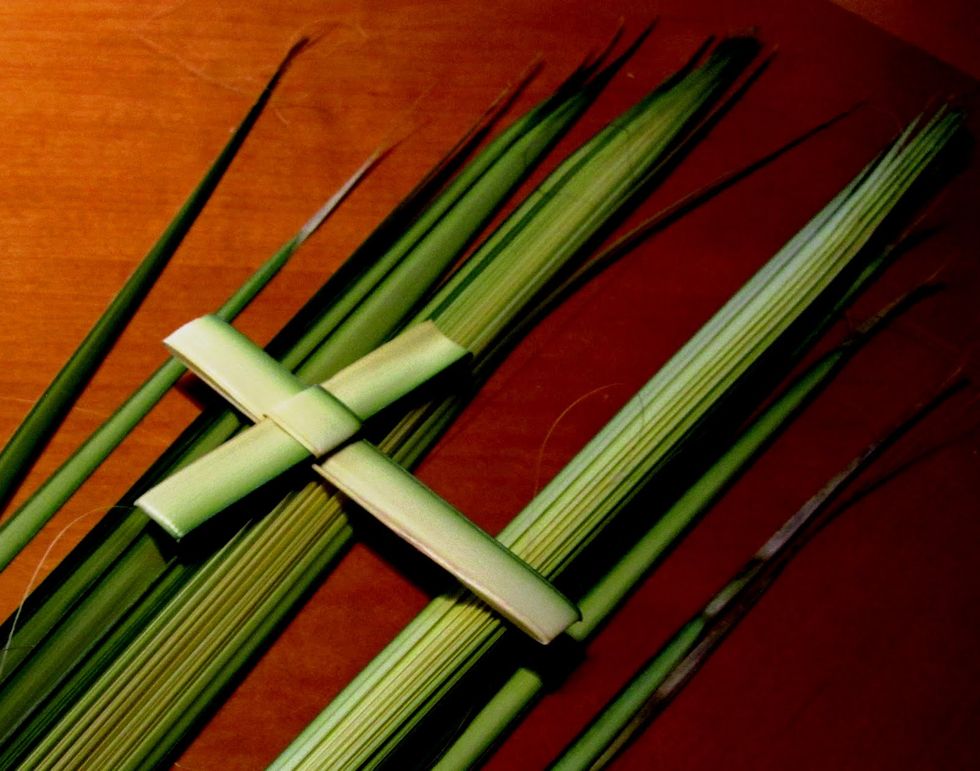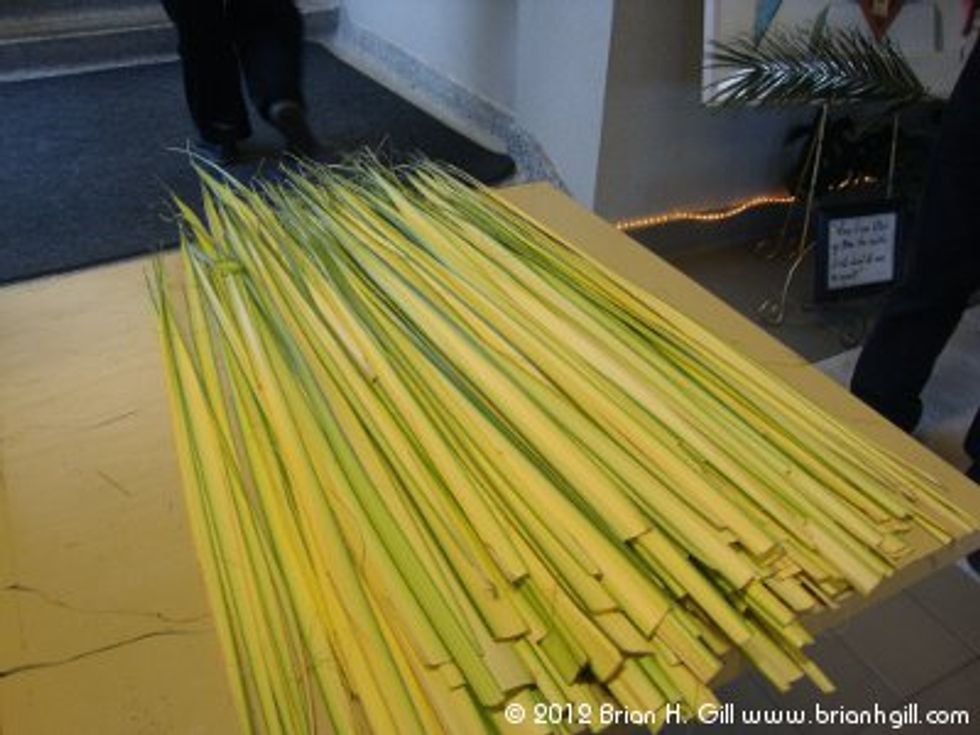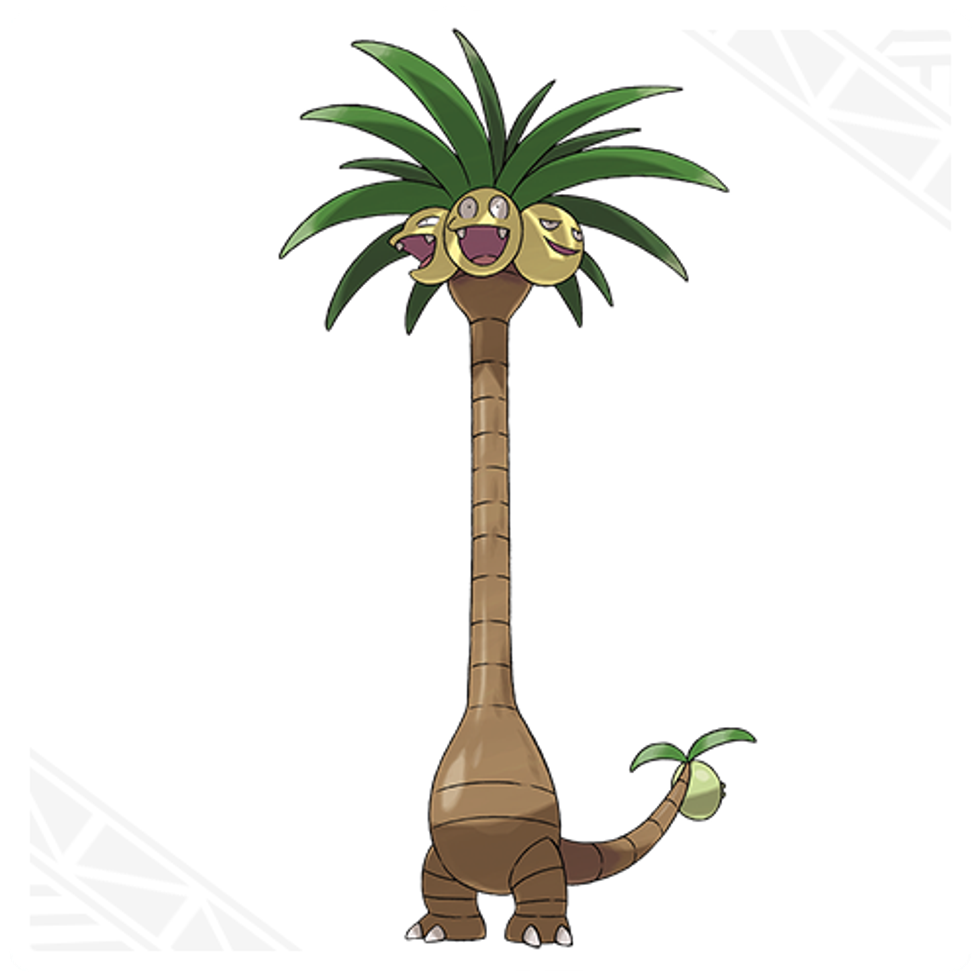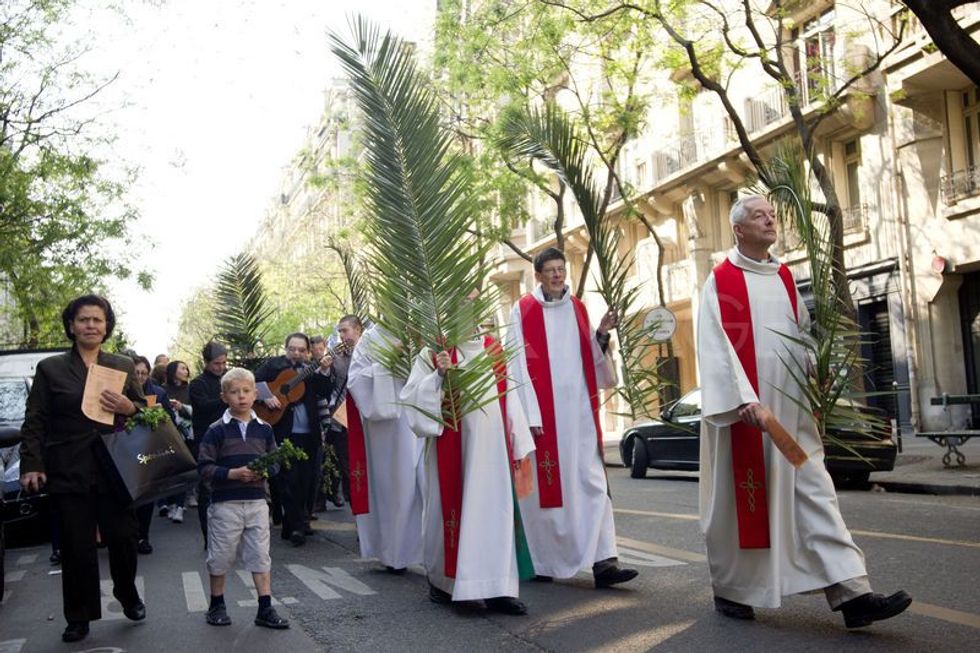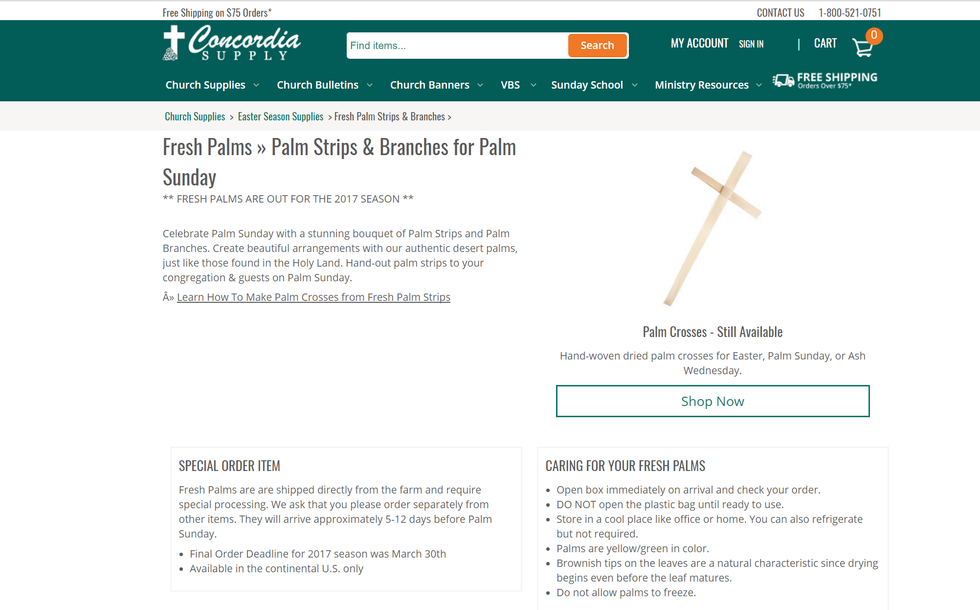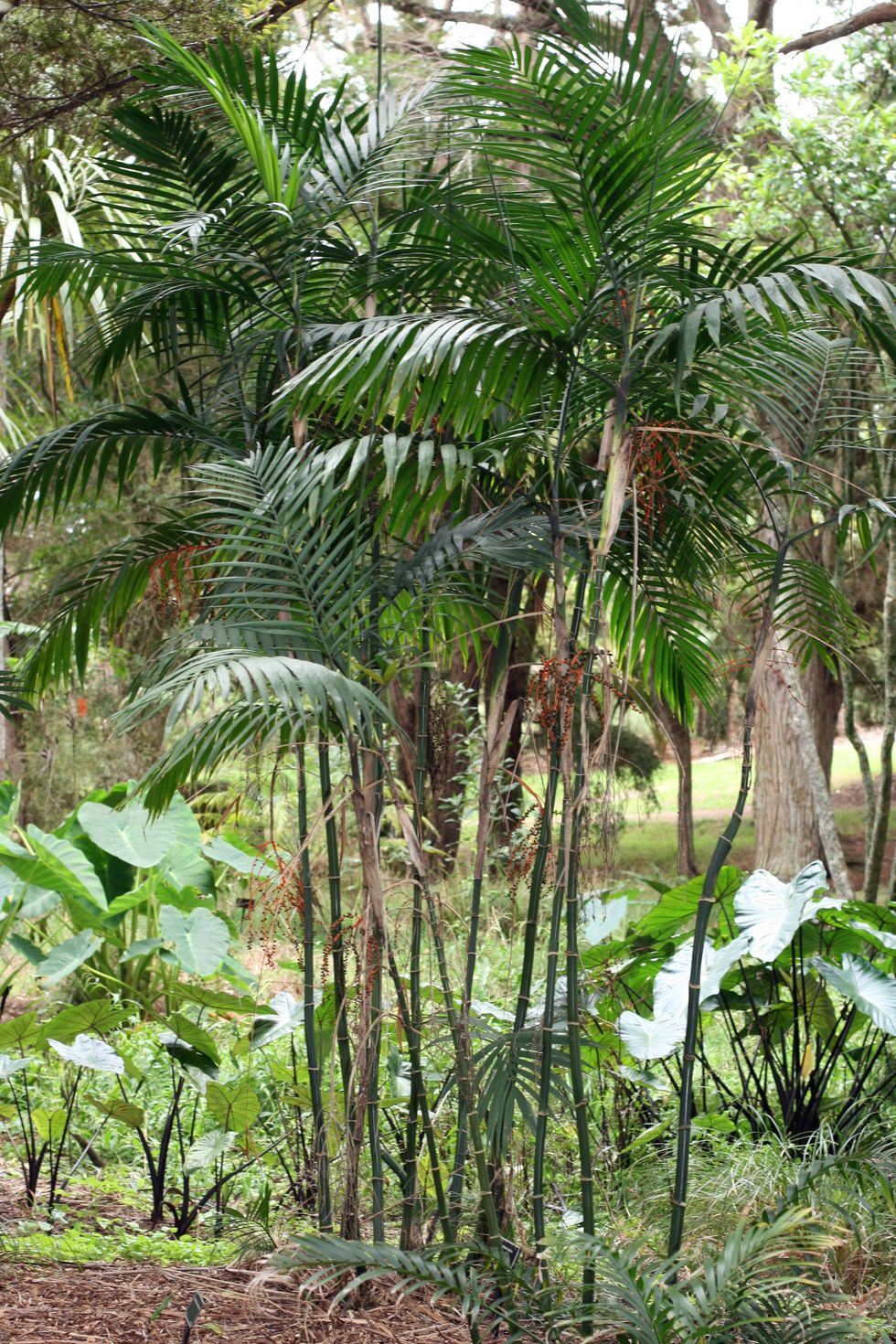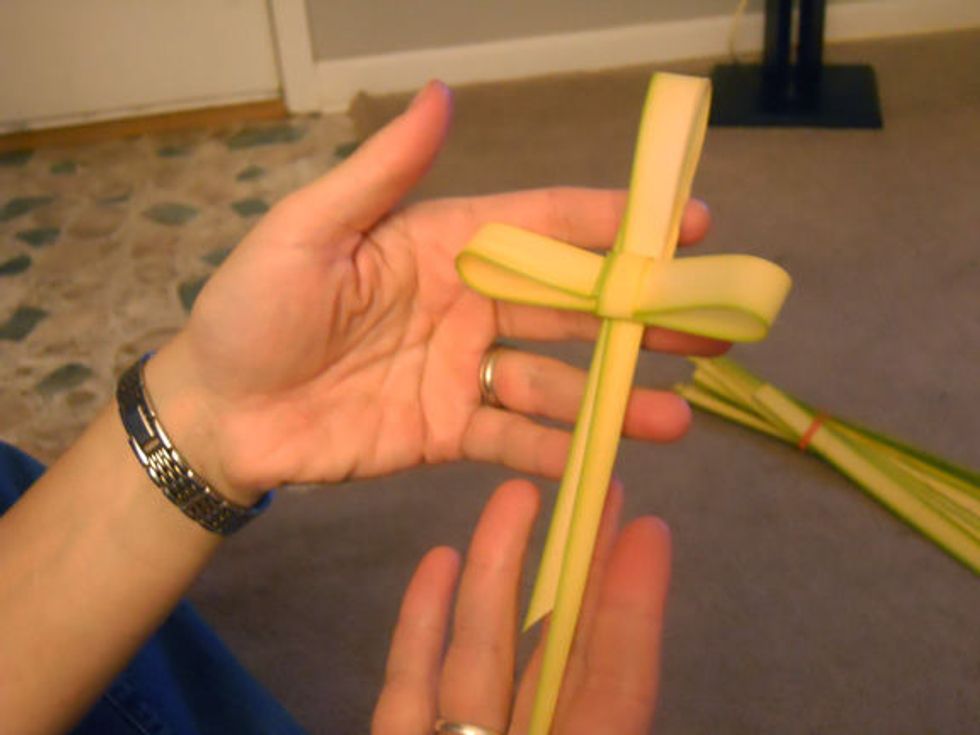In church last Sunday as of writing, it was Palm Sunday: the dawning of Holy Week, a commemoration of Jesus' triumphant entry into Jerusalem, and a meditation on how quickly the masses' adulation turned into spite and hatred. At least that's what one's supposed to think about. Instead, I was wondering:
What kind of palm tree does this come from?
I'm honestly curious. Palm leaves look like this:
...sorry, that's what palm trees look like. Palm leaves are supposed to be shaped like this:
The big, frondy things. You know, the kind that can reliably cover a street, as described in the Bible.
Is this a cultural thing? Sure, if you live in places where palms grow you can always pluck a branch, but what sort of "palm tree" grows giant blades of grass?
The short answer: all of them technically do. To make the palm strips, you just pluck one of those big branches. However, that poses another question: where do churches get all of these palms, anyway? The answer to that is incredibly fascinating in several ways.
Firstly, there are church supply stores where churches can order palms in bulk:
Honestly, these are the kind of stores that you know must exist, economically speaking, but never really think about. They provide a parish's every need in all church seasons, providing communion wafers, altar dressings, and all those candles. Kind of like those catalogs of party favors and religious education supplies we got every now and again when I was younger.
But that's only where churches get the palms. Where do the leaves grow? That's even more interesting. Most of the palms used in Palm Sunday churches come from a genus of shorter palm trees known as Chamaedorea.
An example.
Due to the vast demand of these kinds of leaves, not only during the Easter Season but also for bouquets, an entire industry is built around harvesting these plants in their native habitat in the Latin American rainforest. As with most things regarding the rainforest, several palm providers are making special efforts to be enviromentally-friendly and sustainable. Wow.
Sometimes, the scale of the modern economy is staggering. To provide for the need of over a billion Catholics in over two thousand dioceses, manual laborers in Mexico and Guatemala go into the rainforest to (sustainably) cut off leaves from trees so companies can ship them en-masse to Masses where you can fold them into a cross.
Wild.

